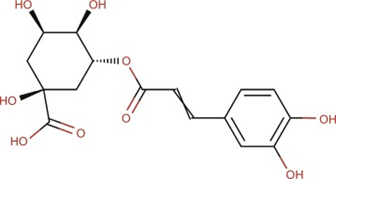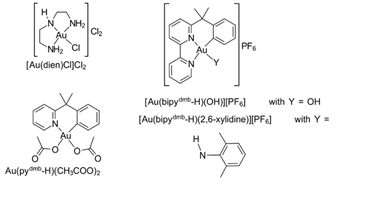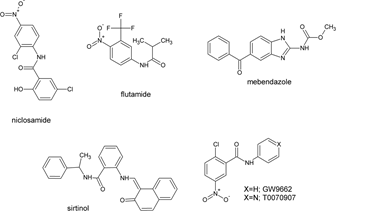Letter to Editor :
Manu Mitra* Organic chemistry is the branch of
physics which deals with the properties, structures, reactions, compositions
and preparation of carbon containing compounds which not only includes
hydrocarbons but also compounds with any number of other elements, for instance
oxygen, nitrogen, phosphorus, halogens, sulfur and silicon. Organic chemistry
can be used to create new structures and develop better ways of synthesizing
known as compounds. Organic chemistry is generally employed by pharmaceutical,
chemical, biotech, consumer products, and chemical and petroleum productions.
Although, biotechnology is a field of
applied biology that actually involves using living organisms and bioprocess to
create or modify products for specific use. Virtually all biotechnology results
are the product of organic chemistry [1]. Below
are few from plenty of applications on how organic chemistry can be useful to
treat various diseases. Figure 1
Illustrates strained and reactive compounds in organic chemistry [2]. Figure 1: Illustrates Strained and reactive compounds in organic chemistry. A
chemical compound that is commonly found in coffee may help in limiting some of
the damaging effects of obesity. Researchers found that CGA (Chlorogenic Acid)
reduced insulin resistance and addition of fat in the livers of mice who were
given a high fat diet. Apart from weight gain, two major effects of obesity are increased
insulin resistance and growth of fat in the liver, if it is untreated-it can
lead to diabetes and poor liver function. Scientist found that CGA was not only
effective in averting weight gain but also helps to maintain normal sugar
levels and healthy liver composition. Nevertheless, scientists believe that CGA
may help to form the foundation of treatment of those
who may require additional help [3,4]. Figure
2 Illustrates chemical structure of chlorogenic acid [5]. To
battle against cancer requires eliminating cancer cells but with
existing treatments have contradictory consequences on healthy cells. Patients
normally develop resistance to the drugs and are affected with side effects as
a result of doses used in the treatments. To
solve these problem researchers from Switzerland analyzed 200 combinations of
different anti-tumor drugs in an effort reduce the doses. They used a novel
method to test the impact of a blend on a cancer cell and healthy cell
simultaneously. Scientists discovered a favorable mix of four components called
C2, which can eliminate tumor cells simultaneously leaving healthy
cells unaffected. C2 contains of four products (tubacin, Cl-994,
erlotinib and dasatinib). This characteristic feature of C2 is that
it targets the supernumerary centrosomes that can only be found in tumor cells. [6,7] Scientists
found that benzoquinoline inhibited the
capability of Ebola virus to multiply and replicate in cell culture. Ebola
virus, part of filovirus family, is a single stranded
RNA
virus that causes serious disease in humans. Only experimental cures were
available. There are no approved drugs or Nano medicines to treat Ebola
virus or any other filovirus infections, so there is a critical need for new
methods. A
possible antiviral target is the viral equipment and activities involved in
carrying out RNA synthesis for Ebola virus. An organic chemical compound
demonstrates effective antiviral
activity
against not only Ebola virus but also several other virus as per the scientist
who was led Georgia State University. [8,9]. Figure 3 Illustrates Prodrug GS-5734 for Ebola virus [10]. Figure 3: Illustrates Prodrug GS-5734 for Ebola virus. Scientists
commenced a large scale search for new drugs that would overwhelm the function
of a very important element of the immune system, MHC class II proteins, which
are associated with autoimmune diseases. MHC class II proteins generally hold
pieces of overrunning bacteria and virus on the surface of specific antigen
presentation cells. Presentation of these fragments alerts other dedicated
recognition cells of the immune system called lymphocytes which are normal
immune response. Generally, this response is inadequate to harmful bacteria and
viruses, but occasionally this process goes off-center and the immune system
turns against itself causing autoimmune diseases such as Lupus, Juvenile diabetes
and rheumatoid arthritis. Gold
compounds have been used for the cure of rheumatoid arthritis and other
autoimmune diseases for more than 7 decades until now how the metals work has
been unknown. Metals work by dismantling bacteria and virus particles from the
clasp of a key immune system protein [11]. Figure
4 Illustrates Chemical structures of Gold compounds [12]. Figure 4: Illustrates chemical structure of gold compounds. The
capability to create artificial cells can be a key step towards more effective
drugs to cure cancer and autoimmune diseases and possibly lead to better
comprehend of human immune cells behavior. Such cells also could eventually be
used to improve the immune system of people with immune insufficiencies or
cancer. Scientists
have created a new technique of synthetic T lymphocytes or T cells that are
almost similar of human T cells. This artificial cell could be a vital step
towards more effective drugs to treat autoimmune
diseases
and cancer and also it could lead better comprehension of human immune cells
performance. Scientists were able to mimic T cells size, shape and flexibility
which allow performing simple functions of targeting and homing infections
[13,14]. Figure 5 Illustrates Small
molecule anilides revisited as
anticancer agents [15]. Figure 5: Illustrates Small molecule anilides revisited as anticancer agents. This
article characterizes about few instances for treatment of diseases using
organic chemistry from large, various methods and techniques. It delineates
that how organic chemistry can be improved based on the innovation, ethics and
technology. Biotechnology, Chlorogenic acid, Ebola virus, Nano medicine.Organic Chemistry to Treat Diseases
Full-Text
Introduction

Chemical
Compound in the Coffee May Help to Prevent Disease Related to Obesity

Combatting
Cancer without Effecting Healthy Cells
Organic
Chemical against Ebola Virus

Gold
Compounds to Treat Diseases

Synthetic
Cells to Treat Cancer and Other Diseases

Conclusion
References
Keywords